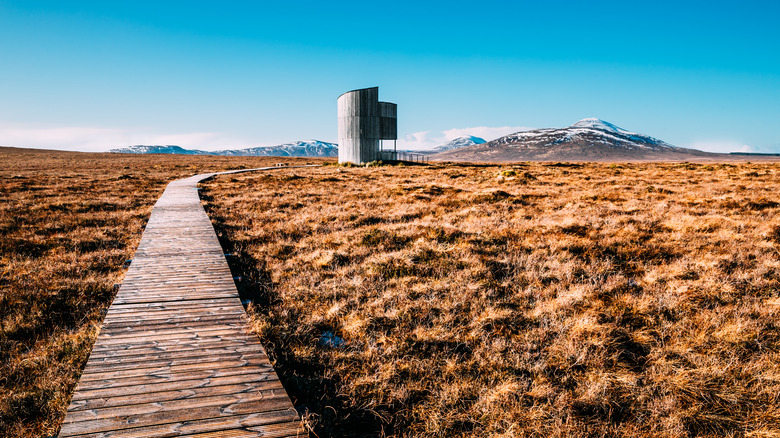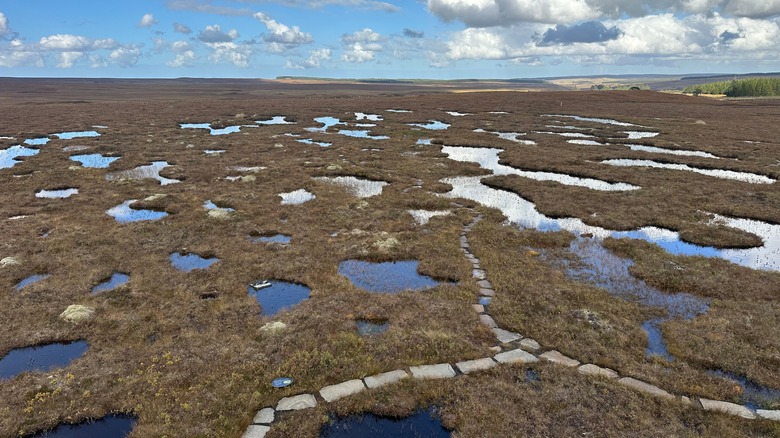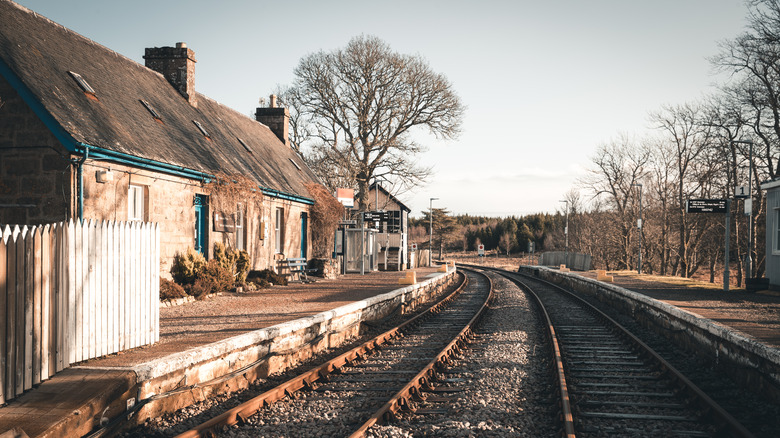Europe's Largest Peat Bog Is A Stunning, Magical Landscape In Scotland That's Extremely Underrated
Scotland is a dreamy destination for travelers, with spectacular scenery, top-notch whisky, and friendly locals. From the pristine paradise of the Isle of Mull to the underrated Isle of Arran, there are so many places to visit. Head up to the far north of the country, and in the remote wilds you'll find an ancient landscape: Flow Country.
Flow Country is a peat bog — "The most intact and extensive blanket bog system in the world," according to the Flow Country website, and the largest in Europe. It covers more than 1,500 square miles in Caithness and Sutherland, which are two of the most northern counties in mainland Scotland. The U.K. is home to approximately 13% of the world's blanket bog, and the Flow Country was named a UNESCO World Heritage Site in 2024, the first — and only — peatland world heritage site in the world. And it also has a positive impact on the world's climate. For about 9,000 years, Flow Country has been building up peat, and it is one of the largest carbon stores on the planet, holding 400 million tons of carbon approximately. It's still a relatively underrated attraction though — the Royal Society for the Protection of Birds (RSPB) has a Flow Country nature reserve in the Scottish village of Forsinard, and less than 5,000 people flock to the Forsinard Flows reserve annually, according to IUCN UK Peatland Programme.
How to experience Flow Country
Flow Country covers a vast area, so it can be hard to know where to start. The first stop should be the Visitor Centre at RSPB Forsinard Flows — this is the main attraction for learning more about the peat bog and seeing wildlife, plus it's the starting point for two great hikes. (The Visitor Centre is operational April to October.) Head out on the Forsinard Flows and Tower trail, an easy and flat 1-mile walk, to the Lookout Tower. The views over the blanket bog here, with its small pools of water shimmering, are simply beautiful. The Forsinain Trail is another popular hike that starts at the Visitor Centre; it's a 4-mile walk through farmland with the chance to spot some of the notable birds that call this area home. Check out the views from the viewing area at Crask Inn, a remote pub near Lairg that overlooks the peatlands of Cnoc an Alaskie.
You'll hopefully see some of the area's unique wildlife when you explore Flow Country. Voles, red foxes, otters, and deer are some of the animals you might spot; keep an eye out for adders, the only venomous snake in the U.K. The area is especially known for its birdlife: spot the golden plover, skylark, curlew, hen harrier, greenshank, or dunlin here. Visiting in spring or summer will give you the best chance to see these birds. And while you're unlikely to spot it unless you're in the water, the freshwater pearl mussel, which is an endangered species, is one of the rarest animals to be found here.
How to get around and where to stay
Flow Country is located in the far north of Scotland. It's easiest to explore here by car — some of the best spots are along the A836 and A897 roads. However, you can access this destination by train: the Far North Line, which connects the city of Inverness to the northern Scotland towns of Wick and Thurso, traverses across the landscapes here. The RSPB Forsinard Flows Visitor Centre is located at Forsinard train station, providing easy access by rail.
The most convenient airport for Flow Country is Inverness airport; this has the best range of international flights and is about a 2.5-hour drive away. Forsinard Lodge, a cozy B&B, and Forsinard Suites, which has self-catering rooms and apartments, are two properties with an ideal location in Forsinard. There's a much wider range of accommodation in Inverness, with everything from budget hostels and cozy B&Bs to elegant hotels. If you're planning a visit to Flow Country, be sure to see more beautiful places around Northern Scotland, such as the stunning sandy beach at Achmelvich Bay.


